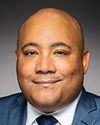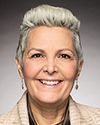Thank you for that question.
As I've said, I think sustainability is not only dollars and cents. I think the investments are important, but we need to be able to build on the gains of the leadership that has been built and the adaptivity, or adaptive capacity, that we have been able to bring to the fore.
I think governments can do a simple thing. This is what I also was saying this morning in another meeting with a provincial minister. The federal government actually has the capacity to convene a number of other funders, including major players, using philanthropy, using the United Way. You are already working with them around the community recovery fund. Bring these Black leaders to the table and have the discussion about what it takes to sustain the gains, the good stories here.
Part of it is that there's a good story now. As I said, the landscape is shifting. We have the Black intermediaries and we have the Foundation for Black Communities. We have the Black Opportunity Fund. We have a number of key players, and we're creating a new story in Canada.
How we keep going forward with that story will require us to be bold. I think that as a federal government, within your departments, you're touching several aspects of the Black communities, such as Black entrepreneurship, where we now have the knowledge hub at Carleton University.
My peers here were talking about the platforms they have created. In our case, we have created a national capacity building portal. There are a lot of things we could do, but the most important thing is to not reinvent the wheel. We have to connect the dots. By doing that, you can bring in funders that are funding Black communities at the moment and ask what the best practices are that we need to take forward, including this amazing story we have about the endowment the minister announced today.
It's about connecting the dots. It's about not limiting sustainability to dollars and cents. There are other aspects of sustainability that we have to pay attention to. Pay attention to the lessons of the pandemic and the recovery. The other thing we have not covered today is the whole healing aspect coming out of the pandemic, where we have to really support and invest in Black communities.
Those are some of our thoughts, but I am happy to also follow up in writing to the committee on some of these ideas we have put into our own final report to the department.





